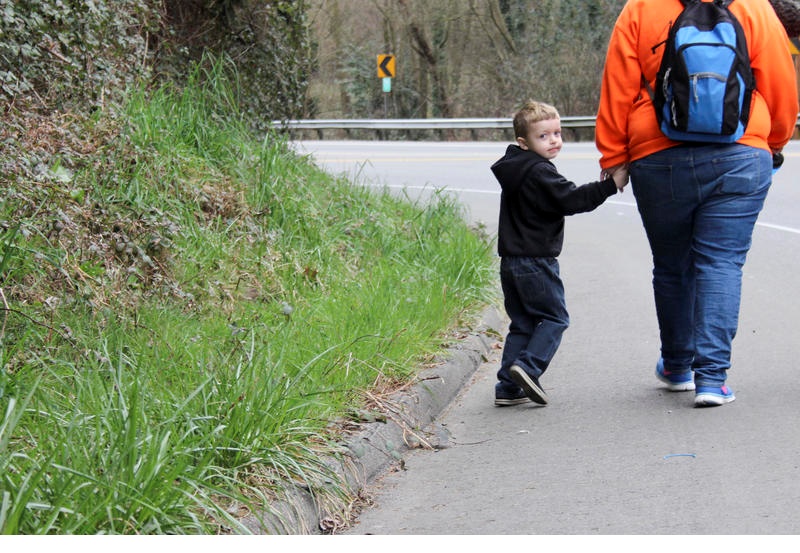Recently, a dear friend of mine moved from Seattle to a small city in the desert southwest. It wasn’t exactly a voluntary exit (a casualty of the rising cost of living in our shared hometown), but the destination, selected precisely for its “different-ness” from the sparkling, blue and green beauty she was leaving behind, was a welcome new adventure.
Shortly after my friend and her husband settled into their new home, a series of unexpected circumstances conspired to leave them without a car. Their lives almost completely fell apart. Bus service in their new city is hourly on most routes—and essentially nonexistent after 7 PM. Sidewalks are limited. Crossings are inconvenient, dangerous, or both.
My friend and her hubby both have jobs. (Hubby works shifts outside of business hours, so no bus commuting for him. ) They also have many pets and so must haul giant bags of food and litter on the regular. And, of course, they must manage all of life’s other errands, obligations, and appointments. Without a car, their lives became consumed with figuring out how they were going to get where they needed to go. It was difficult and stressful and time consuming and not at all workable for the long term. So, they did what they had to do to return to the ranks of vehicle-owning Americans.
Talking to my friend about her struggles getting around reminded me of some similar struggles in my own past. As I’ve mentioned, I couldn’t afford a car for most of the time I lived in Houston. Back then, I wasn’t proudly “car-free”; I was broke and desperate for reliable transportation.
Sidewalks are not a given in our nation’s fourth largest city, and walking is often isolating and risky. Almost every time I left my apartment, I was forced to walk through parking lots and in drainage ditches and an on the edges of roads. (As a bonus, I also regularly experienced street harassment.*)
Houston is huge – 628 square miles, to be exact – with no real center of commerce, so traveling by bus would have been difficult even on the best-run transit system. And back then (ahem), Houston did not have the best-run transit system.** Poor frequency, awful transfers, and some drivers’ tendency to blow past stops to avoid missing green lights (OK, maybe it was just that one driver) made it very hard to arrive anywhere on time. I was fired from one of my many college jobs for chronic lateness.
When I started teaching and could finally afford it, I bought a reliable used car. A few years later, I bought a reliable new car. I was so happy and proud and excited and empowered on the day I drove that car off the lot, I could not have imagined that, only a few years later, I would hand over my keys and never look back.
I have not owned a car in almost 14 years. To this day, I think of my decision to live carfree as one of the best I have ever made. It has changed my life in innumerable positive and beautiful ways. This does not mean that my choice has been painless or without challenges, but most of the time, and certainly on balance, it’s pretty darn good. I would argue, however, that a significant percentage – dare I say a majority? — of people who don’t own cars do not feel enriched by their circumstances. Instead they feel helpless, disconnected, and vulnerable.
So what makes the difference between being happily carfree and desperately carless? Certainly, a lot depends on where you live. In Manhattan, living without a car is easy. In Yakima, not so much. But in Seattle, or Pittsburgh, or Houston, or St, Louis, it can go either way. The most important determining factors are a person’s neighborhood and life circumstances. Shift work, kids and errands, sprawling communities, poor transit, mobility struggles, and high crime rates increase the challenges to living without a car.
It is in these “in-between” places where we have the greatest opportunity to improve people’s lives — the most low-hanging fruit, as it were. In these places, we need to design our transportation systems to accommodate the shift workers, the errand runners, the physically challenged, and the vulnerable. This means frequent, reliable, affordable (preferably free) public transit, all day, every day. It means safe, comfortable transit stops and convenient transfer points. It means sidewalks in every neighborhood. It means protected bike infrastructure. It means accessible everything.
Of course, these improvements will benefit everyone, as they should. Living without a car, whether voluntary or not, should be as painless as possible, for as many people as possible. It is the only way we will build more equitable communities, or reduce car ownership, or lower the cost of living in increasingly expensive cities.
All we are missing is the will.
***
* To be clear, this happens on pedestrian-friendly streets, too. In fact, the more dudes there are walking on a street, the more likely one is to experience harassment.
** Since I moved back to Seattle in 1998, they’ve added light rail and completely revamped the bus system, so I really can’t speak to what it’s like now. Hey, if it’s good enough for Janis Scott…

